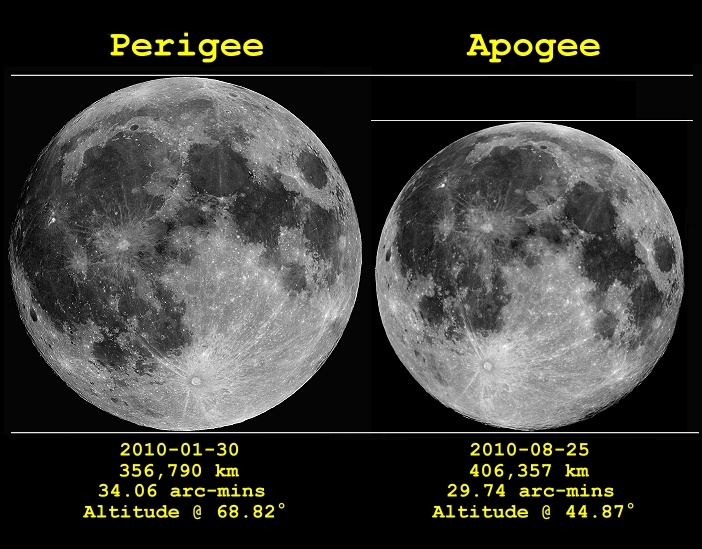You bet it is not!
Unfortunately, almost every year many of our people are thrown into doubts about the Hijri date when they first see the lunar crescent and find it “too thick” and staying above the horizon for “too long”, even though both of these factors do not have a fixed relationship with the date of the lunar calendar. This is because of many factors. Without getting technical, I’ll try to explain two of the more important aspects which determine how thin the Moon of the first can be.
- The tilt of the crescent (or put another way, the direction of the crescent’s cusps)
- The speed of the Moon in its elliptical orbit
To avoid the discussion becoming uninteresting and too complex for the layperson, we’ll not go into “why” these factors influence the appearance of the crescent. We’ll just talk of the result they have.
Before we proceed, please bear in mind a simple rule: the mere presence of the crescent above the horizon is not what matters; being able to actually sight it does.
Aspect # 1:
1(a): When the crescent’s cusps are pointed steeply to a side, a younger Moon is very low in the horizon and sets soon after the Sun does – while the evening sky is still light. Depending on your latitude (not elevation/altitude) in Pakistan and the atmospheric conditions (haze etc.), it can be difficult or even impossible to see such a crescent. When the crescent first becomes visible on the next evening, it will naturally be thicker. Thus, when the cusps are steeply inclined, the crescent of the first can be comparatively thicker. Example of a steeply inclined crescent: 1st Shawwal 1431 (10th September 2010) – link:
1(b): When the cusps point almost upwards, even a very young thin crescent can be much higher and set much later than the Sun. If the sky is not cloudy, we can easily see such a Moon. Thus, a “balanced” crescent on the first of an Islamic month can be remarkably thin.
For a given month, the direction of the cusps depends on the observer’s location on the Earth, north or south of the equator.
Many of us saw how inclined the Shawwal 1431 crescent was, so its comparative thickness was only natural. The crescent of Safar 1432 (January 2011) will have cusps pointing almost upwards, and we will Insha Allah see how extraordinarily thin the Moon of the first will be. But it might be that very few Pakistanis will actually look at the sky because it won’t be Ramazan or Shawwal or Zil’haj!
Example of a “balanced” crescent (Matt Bendaniel, Oct 15, 2001):
Aspect # 2:
Did you know that the size of the lunar disk varies each month? It does so because the lunar orbit is elliptical (oval).
These are two real photos, and not simulations, shot at the same magnification by Anthony Ayiomamitis of Athens, Greece. Surprised to see the size difference?
Also, the Moon’s orbital speed is not constant. When the lunar disk is at its smallest (apogee), the Moon is moving around Earth at is slowest. When the disk is at its biggest (perigee), the Moon is orbiting Earth the fastest. Now let us consider the effect of apogee and perigee on the crescent.
2(a): When New Moon Occurs At Apogee
The Moon is orbiting at its slowest due to which its phase is thickening at its slowest. If the crescent is not seen on a particular evening, it will still not be much thicker 24 hours later when it is first sighted on the next evening. Thus, near apogee, the crescent of the first is thinner.
2(b): When New Moon Occurs At Perigee
The Moon’s phase is increasing at its fastest now. If on a particular evening the crescent is not seen, it will be comparatively much fatter just 24 hours later. Thus, near perigee, the crescent of the first is comparatively thicker.
The Moon of Shawwal 1431AH was not only steeply inclined but was also at perigee. So it was very low in the horizon on 9th September and just 24 hours later it had rapidly thickened.
Q: A layman wants to know about the next Moon’s visibility prospects but does not know what the current Sun-Moon-Earth geometry is. What should he do?
A: He can choose to either become an astronomer or consult the experts. I’ve no affiliation with this site, but renowned experts, both Muslim and non-Muslim, trust and contribute to it: MoonSighting.com
I have tried hard to explain all this in the layman’s terms. For instance, instead of using obscure (albeit quantifiable and technically much more useful) terms like ecliptic latitude, relative azimuth, elongation etc., we talked of the “tilt of the crescent”. I can only hope that, say, next
Ramazan, at least those who have read this would Insha Allah be confident that the “fat crescent over there” indeed heralds the first day of fasting. The future can rest in God’s hands.
Have a safe, blessed year.
Zain Ahmed




